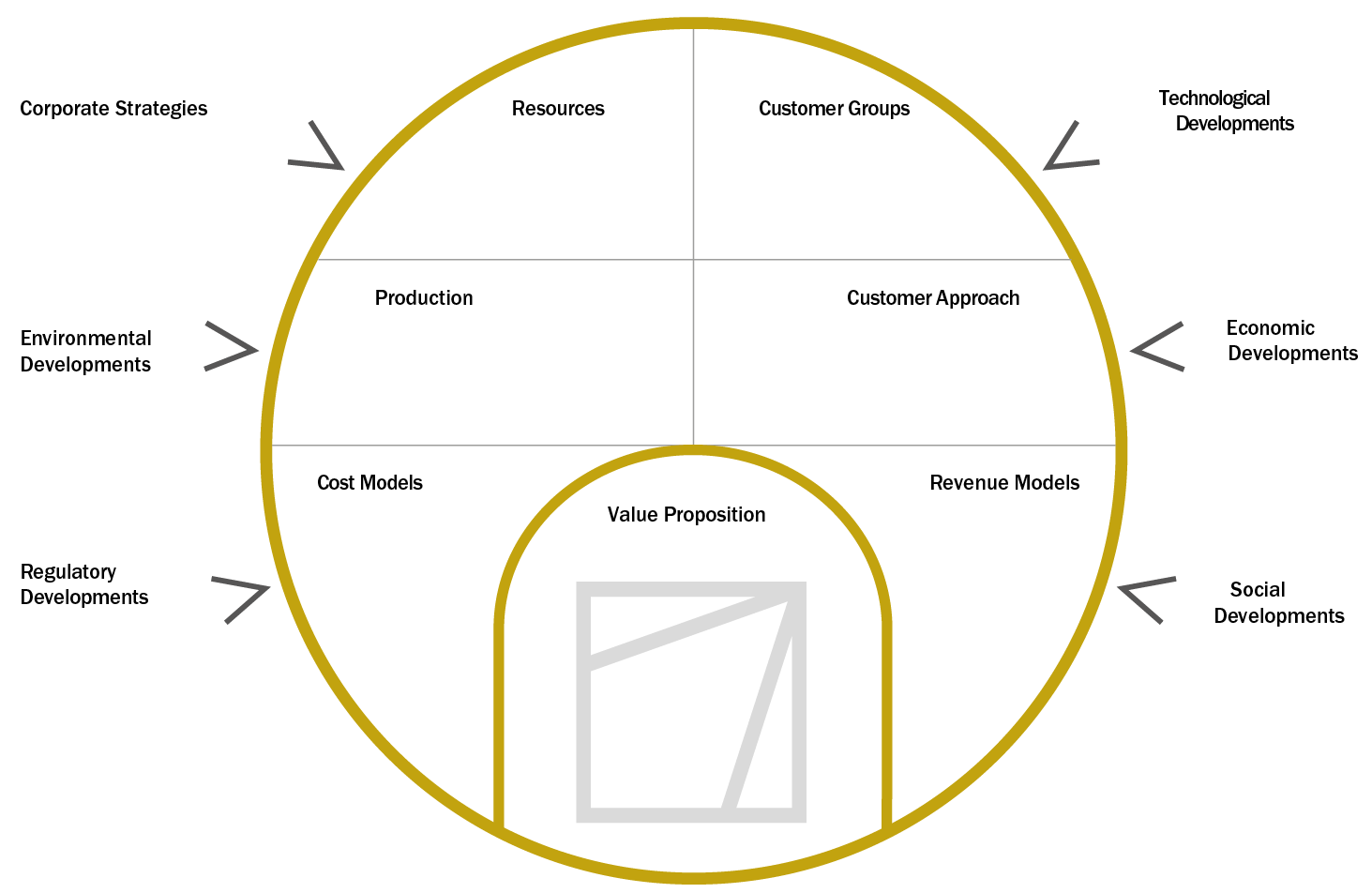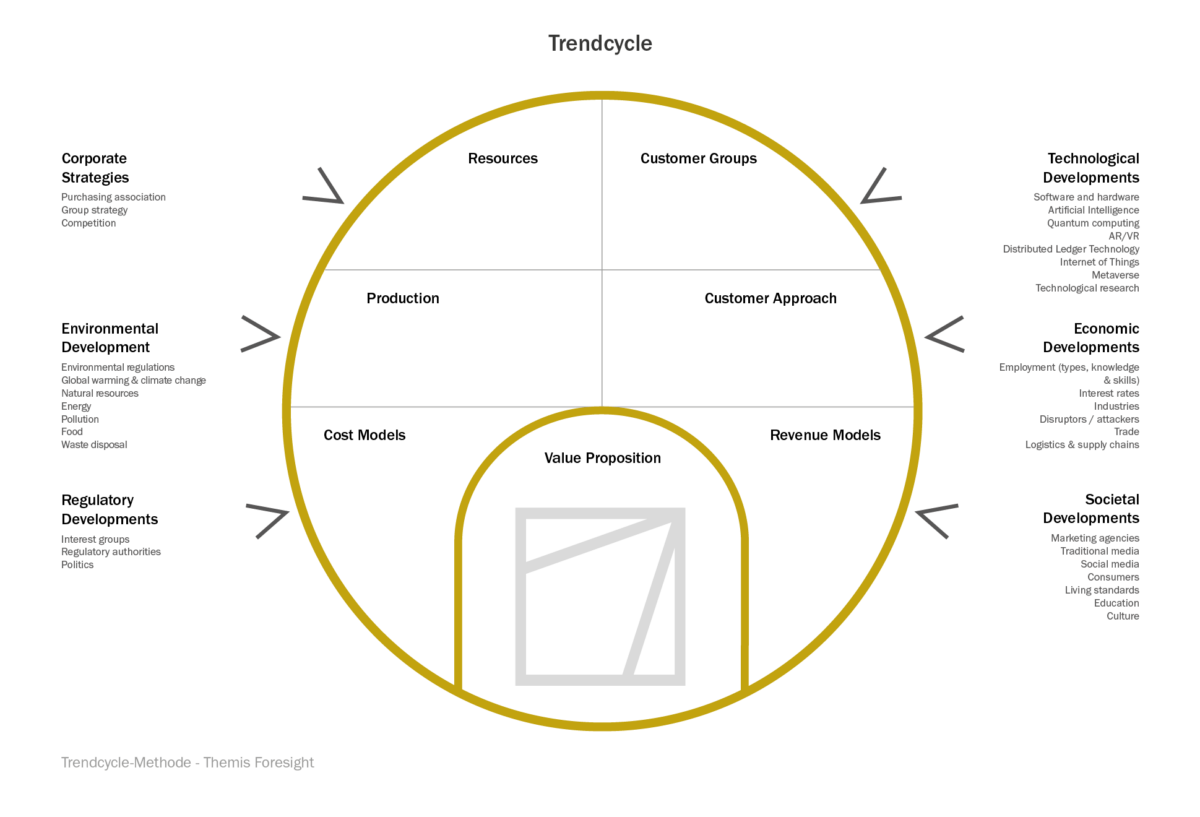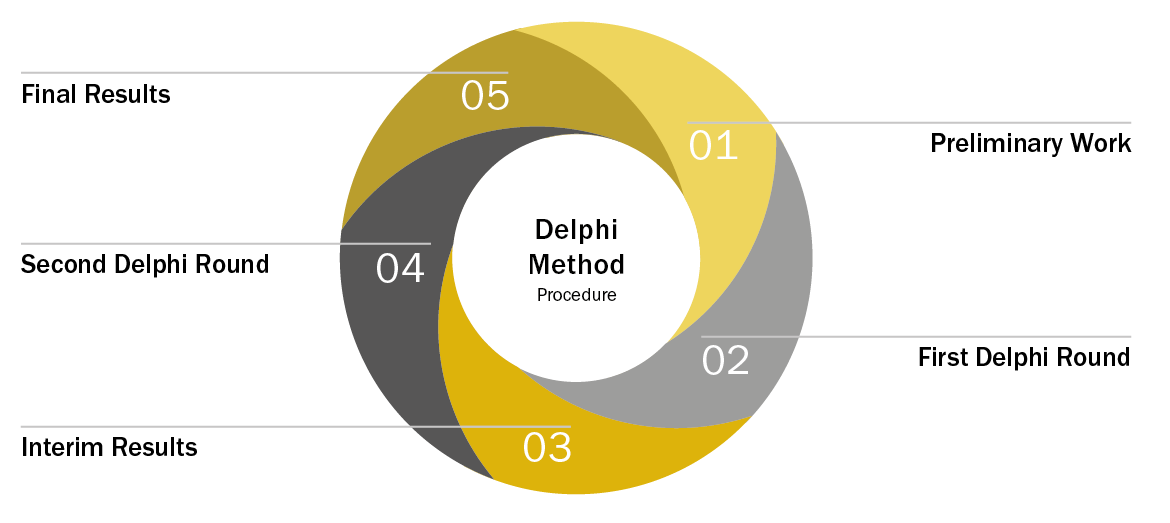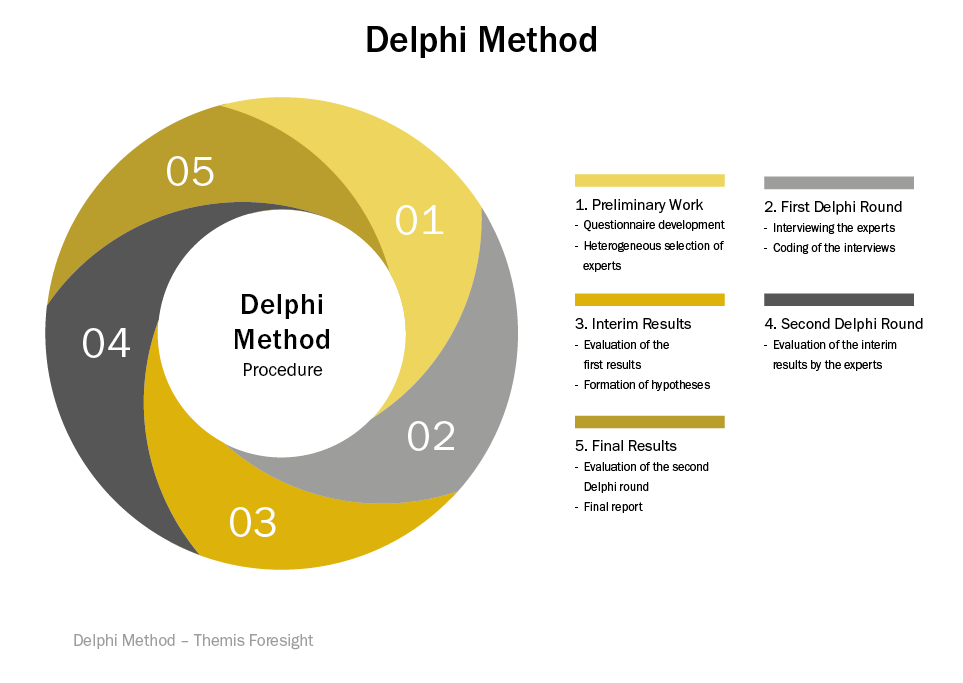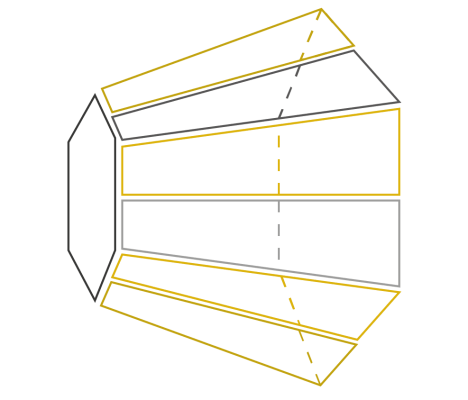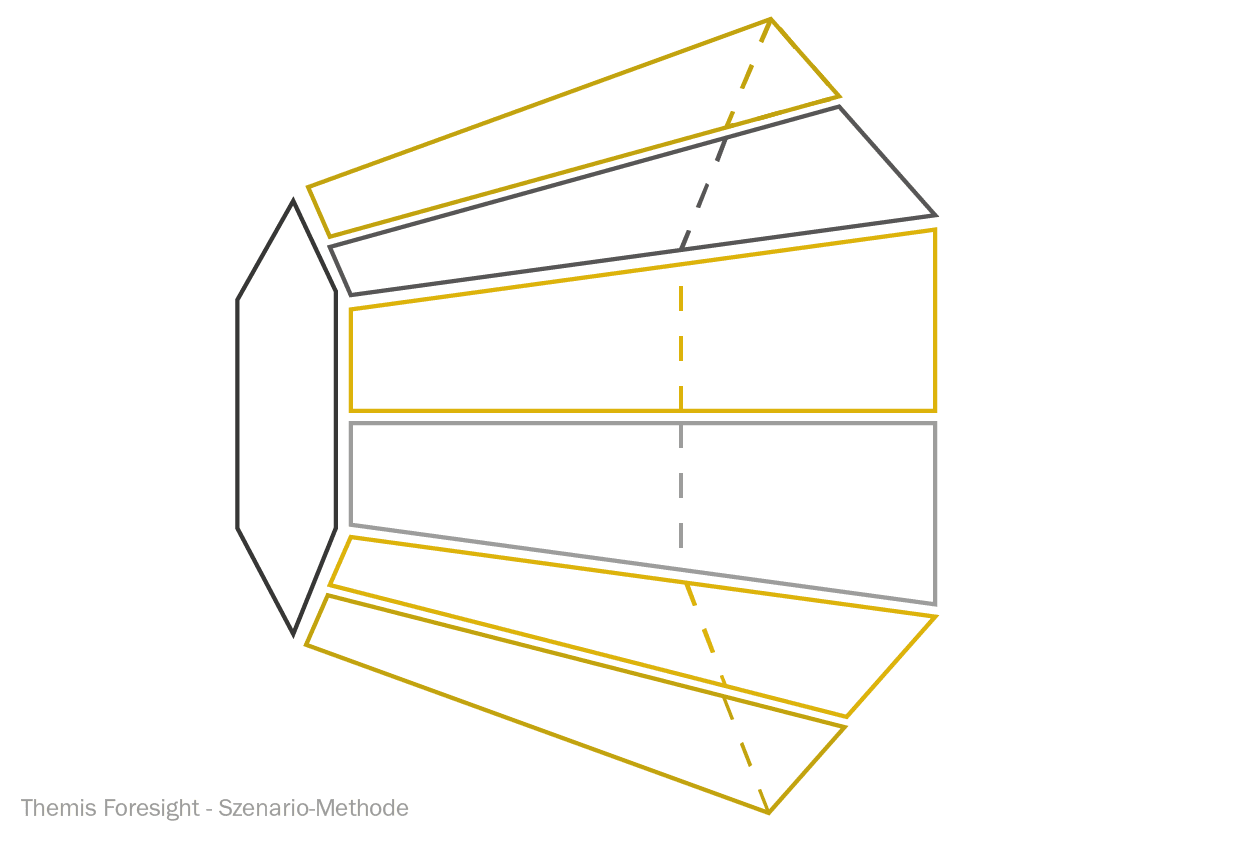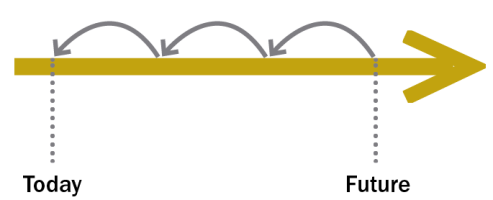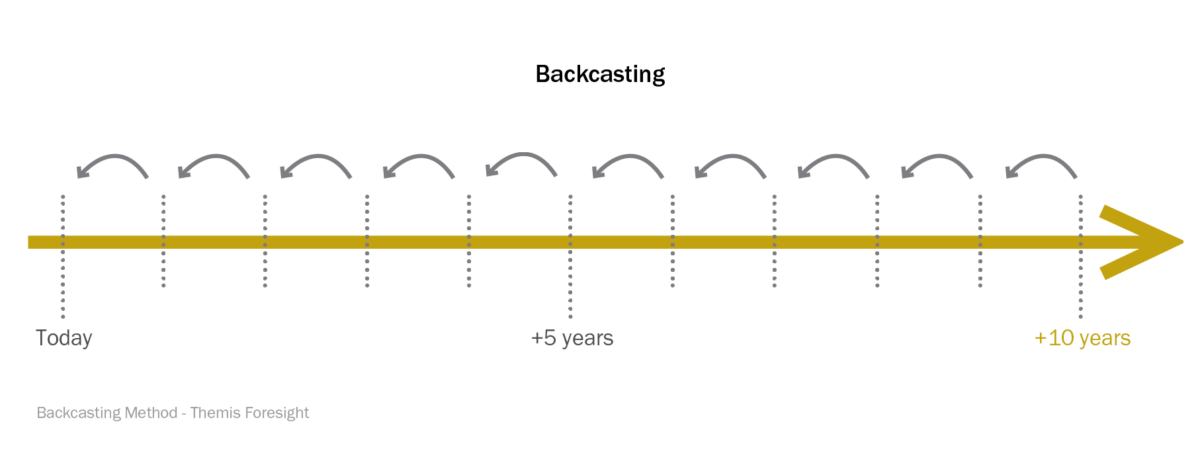What is
Foresight? What Methods do we use?
What is Futures Research?
Futures Research is the “scientific study of possible, desirable and probable future developments and design options as well as their preconditions in the past and present.” (Kreibich, 2006)
Although it could not be further from the truth, futures research is repeatedly confronted with the prejudice of fortune-telling. At Themis Foresight, we understand foresight in the sense of Rolf Kreibich as “the scientific concern with possible, desirable and probable future developments and design options as well as their preconditions in the past and present.”
The world we live in is complex and volatile, the world of tomorrow is even more diverse than the world of today. Simple answers are not enough. Those who want to understand the future do not need echo chambers, but new options for action and fresh thoughts that make complexity tangible. At Themis Foresight, we therefore attach great importance to scientific rigour and interdisciplinarity, which is also reflected in our team. We consciously distinguish ourselves from pure trend research, which focuses on short- and medium-term developments in a specific area. The difference between the terms “future” and “trend” is not explained exclusively by an event horizon or time frame. A future is a picture or a scenario, while a trend is a one-time development that can lead to changes. Foresight builds on trends.
What is Foresight or Corporate Foresight?
Foresight is the application of futures research methods by organizations with the aim of preparing for possible futures in the best possible way. Since it is applied as a management tool in a corporate context, it is also referred to as “strategic” or “corporate foresight”. Corporate foresight is an essential part of strategy development and helps companies to be successful in the long term.
Futures research is the academic study of possible futures. Its goal is to create an awareness of possible future developments. Corporate foresight goes beyond the theoretical examination of possible futures and implies active action in the present in companies or institutions. Foresight practitioners are characterized by the systematic application of futures studies methods.
Both “corporate foresight” and futures research should be distinguished from “futurists,” who use a variety of approaches to make statements about the future that may also be based on speculation.
What does our Foresight research process look like?
The research process in our projects is based on six steps in order to meet the requirements of scientific work.
The rule for us is: we also include uncomfortable findings in our considerations. Science does not tolerate any retouching. This creates the greatest possible scope for you as a business leader.
To ensure that you do not lose sight of important changes in the tunnel of daily business, we offer you customised future research. We use the following scientific methods for this purpose.
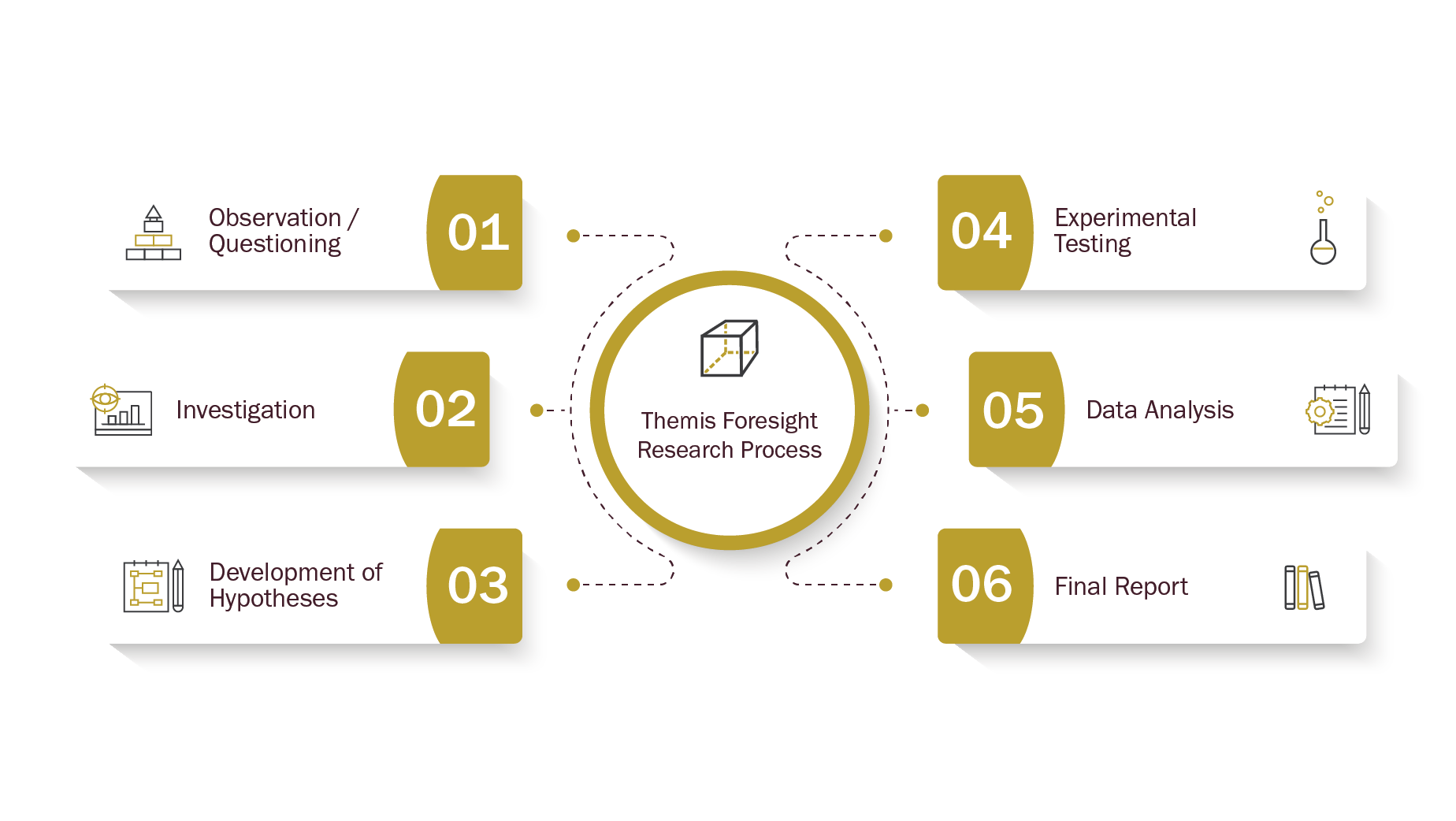
Our Methods Repertoire
Trendcycle
What is the Trendcycle?
The Trendcycle examines social, technological, economic, environmental and political influences and how they affect the business model or an industry. It combines the STEEP analysis with the Business Model Canvas.
Where can the Trendcycle be used?
The Trendcycle is particularly suitable for…
- visualizing the impact of different trends on business models
-
generating a comprehensive perspective on existing business models
- formulating hypotheses for new research tasks and projects
- identifying weaknesses and strengths of existing business models
- developing strategic derivations for companies
Delphi
What is the Delphi method?
Delphi is a qualitative foresight method in which relevant experts give their assessments of future developments in a multi-stage interview process.
The Delphi method is a qualitative survey procedure established by the renowned RAND think tank, which has been widely used since the 1960s. Like Themis Foresight, the method takes its name from Greek mythology – the Oracle of Delphi. The Delphi method is often referred to as a form of controlled debate. It is based on a panel of 15-35 experts with whom in-depth interviews are conducted on a specific topic, e.g. the development of artificial intelligence in the oil and gas industry. We start from the principle that the future is not something that happens by chance. It is created by influential people in business, science, politics, and society.
In the second round, the core statements of the interviews are returned to the experts as hypotheses by means of a questionnaire. Anonymity is maintained so that even unpopular answers can be given unaltered.
What is Delphi suitable for?
The method is particularly suitable for:
- developing forecasts about future developments
- elaborating futures and derive associated means to achieve them
-
Drawing specific strategic conclusions for companies and transfer them into detailed steps
We select our experts with a high degree of heterogeneity. This allows us to obtain a 360-degree perspective on the chosen topic. We do not block controversial points of view, but actively include them in our considerations. By talking to international creators, we gain a global perspective. Before each interview, we develop an individualized guideline.
Besides the obvious advantages of Delphi, there are also justified criticisms. “Know thyself” was the principle of the Delphi oracle. This means that every statement made by designers is usually subject to a bias, which is derived from a person’s knowledge and experience. It is therefore particularly important to recruit experts from different areas that influence a topic for the expert panel. In the example of AI in an industrial context, this would mean talking to engineers, AI scientists, but also AI ethicists and data protectionists. Popular theories like Ray Kurzweil’s singularity would most likely not stand up to a Delphi study with our quality criteria of heterogeneous perspectives.
Scenario Analysis
What is the Scenario Analysis?
Scenarios are narrative descriptions of different futures that help companies to imagine the future and derive necessary steps from it.
Several futures can usually be derived from the insights gained in the Delphi interviews. Developing scenarios is a suitable method for making these possible futures more manageable. It was developed by Herman Kahn in the 1950s in the context of military and strategic studies. Kahn defines scenarios as narrative descriptions of the future with a focus on causal connections and decision points. The point is not that a scenario is probable. The scenario method helps to imagine futures and to derive from them the necessary steps for today. Peter Schwartz, one of the pioneers in this field, was able to successfully lead Shell through the oil crisis with the help of scenarios.
What are scenarios suitable for?
- cataloguing important variables for decision-making
- verbalizing uncertainties
- developing realistic strategies and transfer them into detailed steps
- making the future more tangible for decision-makers in order to be able to make better decisions.
What do such scenarios look like?
A scenario is not a single prediction or forecast, but a way of combining and managing a variety of statements about the future. The future cannot be known, which is why we reject the idea of planning with the most likely future only. Before finalizing the picture of a desirable future for a company, well-developed and comparable scenarios are useful to weigh opportunities and risks.
- Plausibility: they incorporate current aspects of social, economic and technological realities to chart a path from today to the day after tomorrow.
- Consistency: meaning that all scenarios have the same initial theme.
- Excitement and futurism: This may sound trivial, but only interesting scenarios inspire creators sufficiently to derive necessary decisions from them today. In a complex world, things that are possible are constantly changing. So we cannot base our thought processes on the rate of change of the past, but must also think the impossible.
One risk in using the scenario method is the involvement of uninvolved people who see the scenarios as given futures and thus limit themselves in their thinking. The author’s mental starting points thus unintentionally influence the reader’s way of thinking.
We avoid these risks at Themis Foresight by combining scenario development with the Delphi method, so that non-conformist and diverse aspects of future developments are also included in the narratives. We also allow for the uncomfortable and do not serve any prefabricated points of view.
Backcasting
What is Backcasting?
Backcasting supports concrete strategy development. The method aims to put oneself mentally in the future and to derive steps for today.
Like scenario development, the method of backcasting goes back to Hermann Kahn and was developed in the 1950s and 1960s. Since then, it has become part of the canon of scientific methods of future research. With the method, it is possible to strategically achieve future plans within a fixed time frame – today, tomorrow, the day after tomorrow. This method aims to put oneself mentally in the future and to think about today from this perspective. In this way, it is possible to detach oneself from today’s thought patterns and daily behaviour patterns. To ensure that the result also fits the culture of the company, a vision of a desirable future is first developed together with the company’s leaders.
What is Backcasting suitable for?
The backcasting method is particularly suitable for…
- breaking down barriers to thinking
- finding solutions together in an interactive way and thus increase identification with the results achieved
- successfully translating visions into strategies and “next steps”
- developing cross-departmental goals
- First, the participants create a vision for a period about ten years in the future. The vision can be of a general nature or limited to a specific topic, such as mobility in 2035.
- In the second step, the participants work backwards on various paths that, based on their version of the future, enable development in the present.
- Subsequently, the individual development steps are defined in more detail. What specific tasks arise for a department in order to arrive at the desired vision? Are there time constraints or other restrictions, such as budget or human resources? Does the realisation of one’s vision depend on external factors?
- The goal of the last phase is that each person has an individual understanding of the agreed development steps. The result is an action-oriented roadmap that includes a chronological sequence of all tasks. This facilitates the integration of the necessary steps into daily operations and the linkage with human and budgetary resources.
